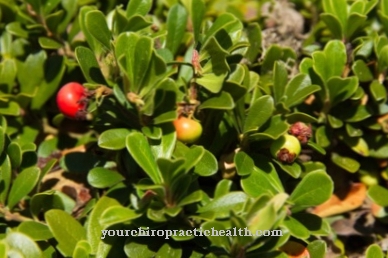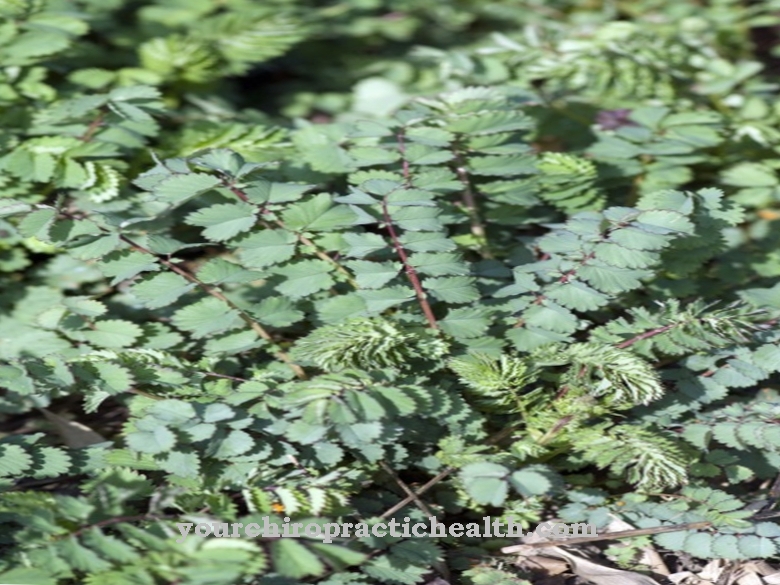Occurrence & cultivation of the chicory

The Chicory has many popular names like Path light or chicory. The most common name reflects the place where it can be found most often: On the wayside. It also grows on embankments, railway tracks or abandoned industrial plants and thrives on dry, nitrogen-rich soils. Botanically, chicory belongs to the sunflower plant family and is native to Europe, West Asia and North West Africa.
As a pioneer plant, it is resilient and is now also widespread in North and South America. In 2009 the Loki Schmidt Foundation voted the chicory flower of the year. The foundation drew attention to the fact that this plant is endangered in some regions of Germany due to a lack of free space. The wild plant is perennial, has a deep taproot and reaches a height of more than one meter.
Its leaves are dark green and lance-shaped and the stems branching upwards have the typical radial blue flowers. These have a diameter of up to five centimeters and develop angular fruits. White or pink flowers are very rare. Coffee chicory, chicory and radicchio are cultivated forms of the wild plant that have been refined by human hands.
Effect & application
The chicory was already used as a medicinal plant by the Romans and Greeks. They use them to make you sweat and for diseases of the internal organs. The bitter substances and inulin contained in the plant stimulate the flow of bile and promote digestion. Inulin is also suitable as a starch substitute for diabetics, as it does not affect the blood sugar level. All parts of the plant can be used for therapeutic purposes and are contained in many finished medicinal products and in tea mixtures.
A juice can be made from the roots, which has a digestive effect. Naturopathy uses root powder, seeds and dried flowers and the leaves of the plant to strengthen the liver, bladder, stomach, intestines and bile. The chicory is one of the ingredients of Schwedenbitter, a well-known bitter spirit. A home remedy for body aches and rheumatism are Wegwarten medicinal wine and Wegwarten alcohol, which are made from the root mixed with alcohol.
The food industry uses coffee chicory to make inulin. Inulin is used as probiotic fiber in products such as yoghurt or sausage products to stimulate digestion, replace fat and improve taste. In addition to bitter substances, the plant contains vitamins and minerals and is an ideal ingredient for salads, soups and vegetable side dishes. The edible flowers are decorative in soups and salads.
Larger buds serve steamed as a vegetable garnish. The wild plant can be established in the garden. It is not available in stores. The cultivated varieties such as chicory and radicchio are available everywhere and are used in the kitchen. The roasted roots of the coffee chicory are used as a coffee drink. These coffee beverages are known under the term Muckefuck. In the 19th century, chicory coffee was popular.
Coffee chicory has now lost its importance, but is still contained in Caro coffee. In China and the USA, coffee chicory also functions as a forage crop for farm animals. In cosmetics, the plant is a component of some creams especially for sensitive skin that is prone to redness.
Importance for health, treatment & prevention
The health-promoting effects of the chicory in stimulating the bile flow and stimulating appetite have been medically examined and proven. The bitter substances they contain stimulate the flow of bile and improve digestion. Animal studies showed that blood lipid levels fell.
These results are not yet sufficiently proven. Naturopathy also uses tea and tinctures from wild plants to stimulate the spleen and liver. The tea has a slight laxative effect and, since it is well tolerated, it is also suitable for treating constipation in children. The bitter substances strengthen the metabolism and the immune system. In addition, naturopathy assumes that the tea has a detoxifying effect: the ingredients can bind heavy metals.
Since these do not get into the blood, the body excretes them naturally. Drinking tea is considered a home remedy for rheumatic diseases. Indian healing tradition uses beverages made from the seed to treat insomnia. Wegwarte teas can be purchased in pharmacies or made yourself. The tannins of the leaves and roots are said to help with blemished skin, reddened skin or eczema. They can be found in some creams. The crushed, crushed roots can also help as a pad on the affected skin areas.
In a mixture with rose oil and vinegar, the plant sap can help with headaches. An outdated method is the use of porridge or tea pads for eye infections. In Bach flower therapy, chicory is a plant essence that supports egocentric people in finding a way to selfless love. There are hardly any known side effects after ingestion.
It is not recommended for people with allergies to sunflower. People with gallbladder disease and gallstones should consult a doctor before using any products with Wegwarte. The products are not recommended for diseases that worsen due to increased gastric juice production. Basically, for pregnant and breastfeeding women, it is advisable to consult a doctor before taking the product.

























.jpg)


